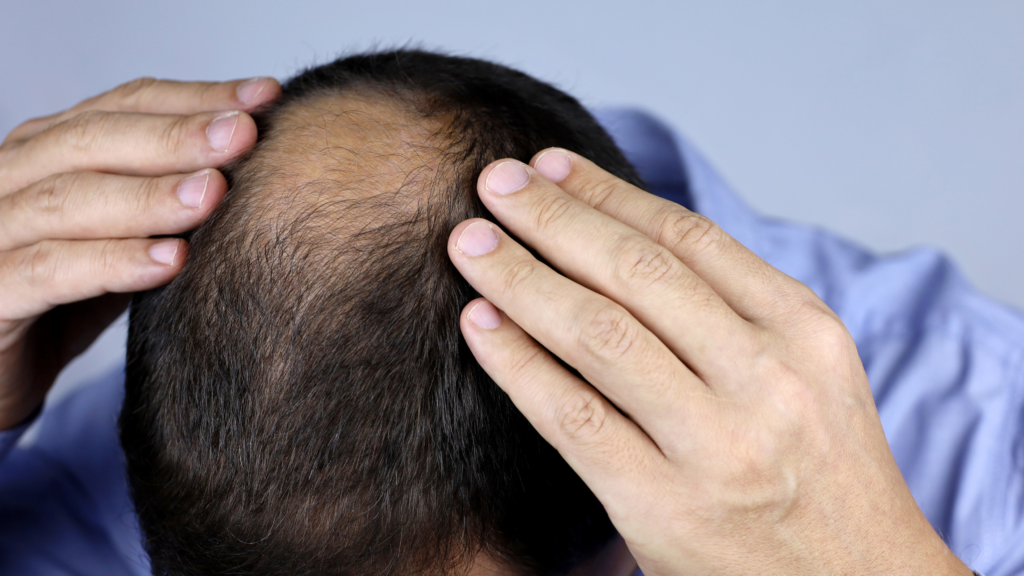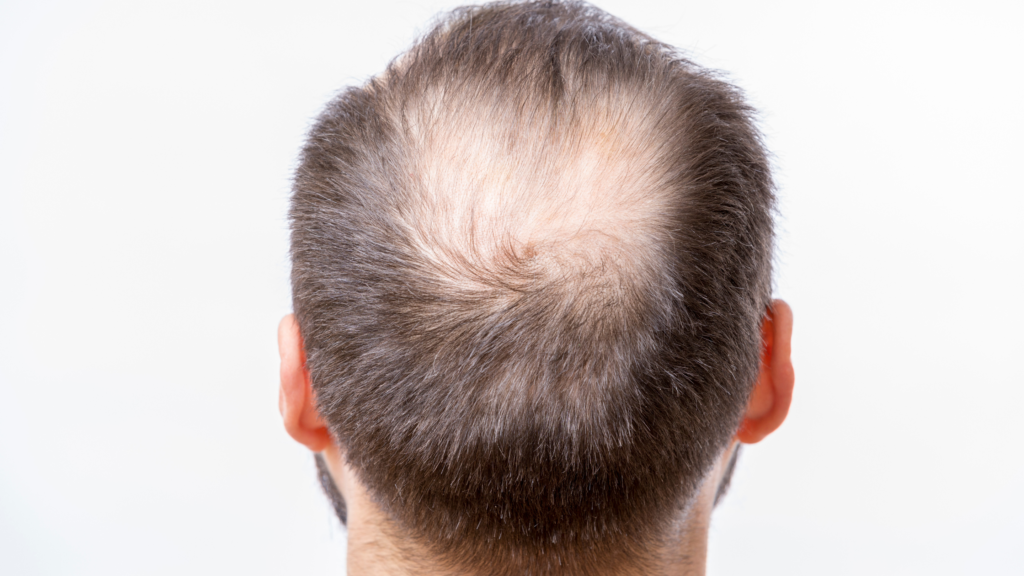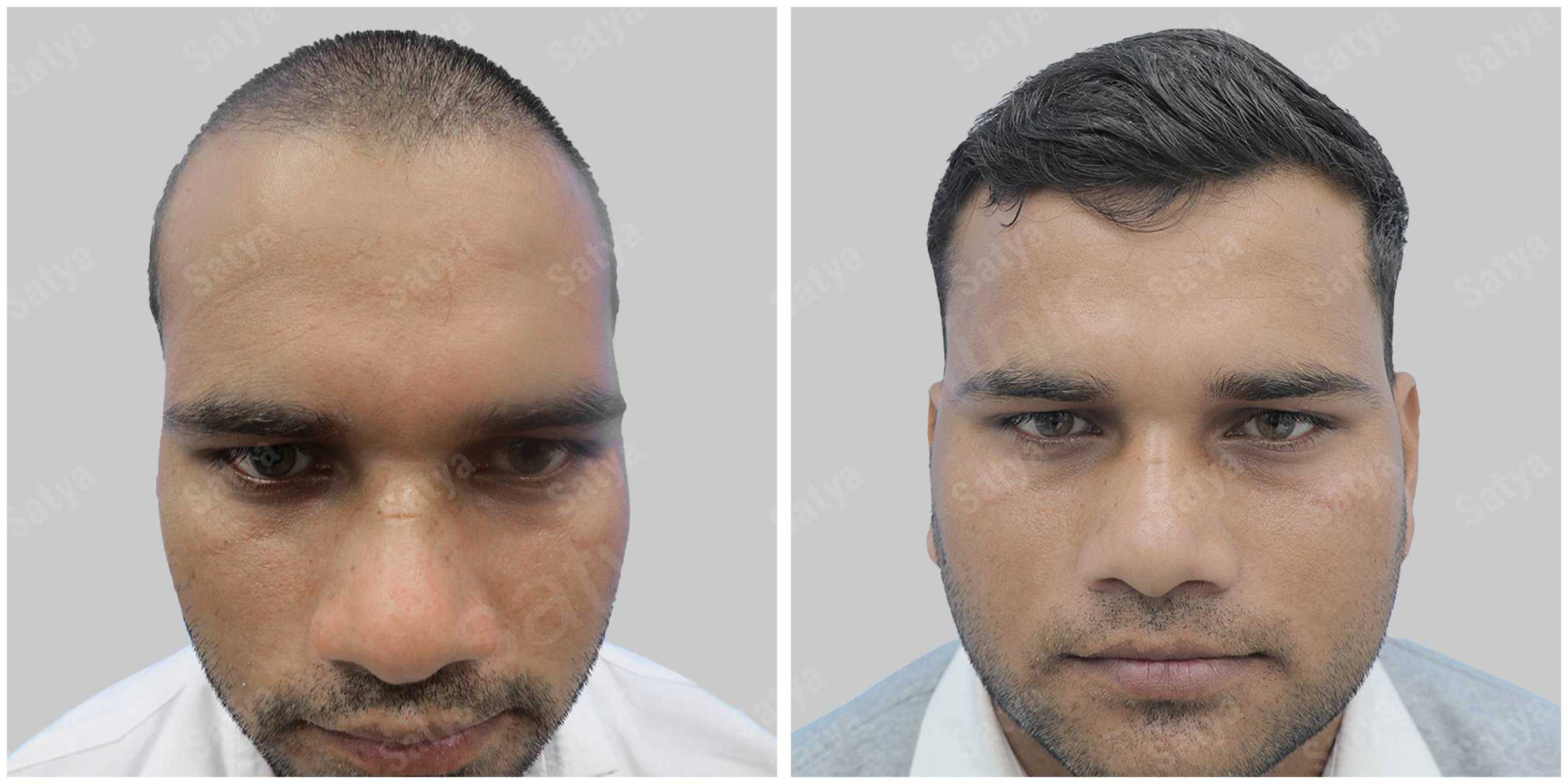Have you ever observed people touching their hair and saying goodbye? Balding is similar to that unexpected visitor who stays too long. Let’s now focus on a single chapter, Crown Hair Loss. Imagine a magnificent ring of hair disappearing from the crown of your head. But don’t worry! We’re exploring the enigma around crown hair loss and looking at easy fixes. It resembles a quest to take back your hair empire. Hold on as we discuss how to revive your crown’s regal comeback with simple treatments.

What is crown hair loss and what treatments are available?
Have you ever seen people touching their hair and saying goodbye? Balding is similar to that unexpected visitor who stays too long. Let’s now focus on a single chapter, Crown Hair Loss. Imagine a magnificent ring of hair disappearing from the crown of your head. But don’t worry! We’re investigating the enigma around crown hair loss and looking at easy fixes. It resembles a quest to take back your hair empire. Hold on as we discuss how to revive your crown’s elegant comeback with simple treatments.
Signs and Identifiability of Crown Hair Thinning
The recognition of crown-thinning hair requires careful study of particular symptoms that appear gradually.
Widening Part Line:
Take note of any changes in the width of your hair part, particularly near the crown. A possible thinning of the crown hair is indicated by this expansion.
Oval or Circular Balding Area:
Observe the development of an oval or circular balding area that is distinct on the scalp. One of the distinctive features of crown hair loss is this localized thinning.
Decrease in Hair Density:
Your hair’s thickness is noticeable. Hair density is frequently decreased by crown thinning, giving the appearance of finer, weaker individual strands.
Visible Scalp:
As the illness worsens, a bald spot-like patch of hair loss on the scalp develops in the crown area.
Miniaturized Hairs:
Examine the crown area for any finer hairs. Hair follicles shrink and become miniaturized, a common feature linked to hormone imbalances and genetic factors.
Modifications in Texture:
Take note of any changes in the way your hair feels. Hair that is thinning at the crown may become more brittle and prone to breaking.
Slower regrowth:
A longer resting phase in the hair growth cycle may be indicated by a slower rate of hair regeneration in the crown.

Reasons for Crown Hair Thinning
Thinning hair on the crown, which mostly affects the top of the scalp, is caused by a variety of reasons, including aging, hormones, and heredity.
Molecular Predisposition:
Genetic heredity is a major factor in crown hair loss. People who have a family background of vertex baldness are more likely to experience this pattern themselves.
Hormonal imbalances:
Dihydrotestosterone (DHT) in particular plays a key role in crown hair thinning. A greater sensitivity to DHT may cause hair follicles to shrink, which will lessen their capacity to produce strong, healthy strands.
Aging:
The thinning of crown hair is largely caused by the natural aging process. The hair development cycle alters with age, resulting in longer resting times and shorter growth phases, which causes overall hair thinning at the crown.
Environmental Elements:
Crown hair thinning can be made worse by exposure to environmental stressors, pollution, and improper hair care techniques. In order to combat these outside impacts, it becomes essential to maintain a healthy scalp environment.
Options for Treating Crown Hair Loss
Examining a variety of individualized therapy substitutes is necessary to address crown hair loss. A summary of successful interventions is as follows:
Minoxidil
How It Works: When applied topically, minoxidil increases blood flow and stimulates hair follicles, which promotes hair growth.
Effectiveness: Minoxidil is a commonly used and FDA-approved medication that increases crown hair density for many people.
Finasteride
How It Works: The hormone DHT, which causes hair follicles to shrink, is inhibited by finasteride. This oral drug may encourage hair growth while halting more hair loss.
Effectiveness: Very effective at treating the hormonal factors that contribute to crown hair loss.
Topical Nutrient-Based Solutions
How to Use It: Topical solutions that are enriched with vital vitamins and nutrients provide a healthier environment on the scalp by feeding hair follicles.
Effectiveness: Minoxidil is a commonly used and FDA-approved medication that increases crown hair density for many people.
Treatment with Platelet-Rich Plasma (PRP)
How to Use It: PRP therapy promotes natural hair growth by injecting concentrated platelets from the patient’s blood into the scalp.
Effectiveness: PRP therapy is a potential non-surgical approach that has produced good outcomes in stopping hair loss in the crown.
Hair Transplantation
How It Works: To provide a long-lasting hair treatment, hair follicles from donor locations are transplanted to the crown during this surgical process.
Effectiveness: Provides a long-lasting and natural-appearing outcome for individuals searching for a more comprehensive intervention.
Please use the number or email provided to contact us with any questions or to schedule an appointment for a hair transplant in Delhi. For additional details on our offerings and client endorsements, please visit our website.
Book an appointment
Consultation

Repair

Blog

Galleries









